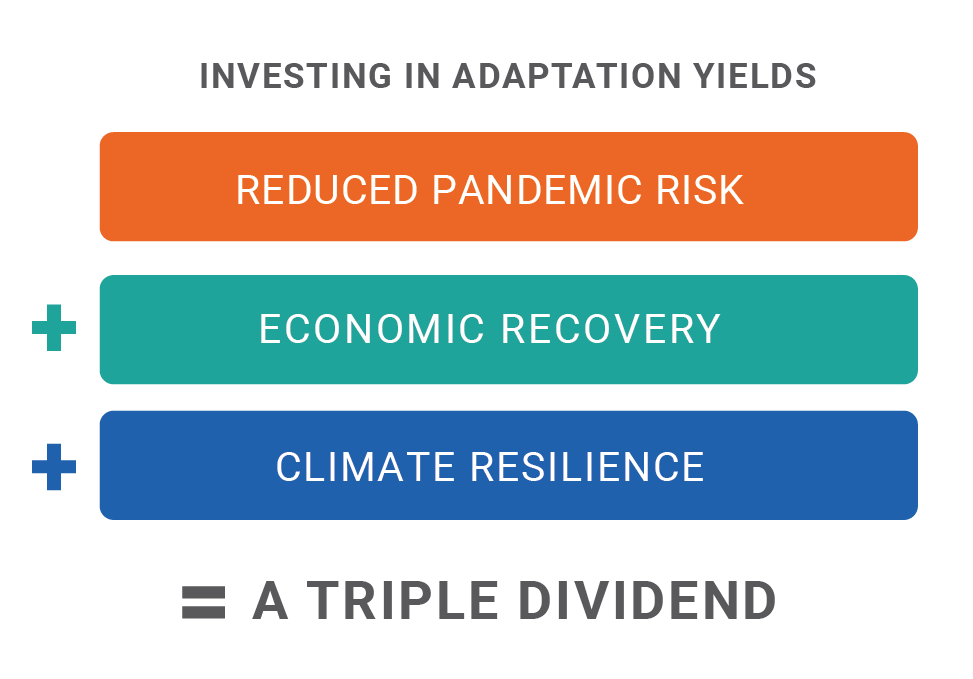Is a green recovery in Africa possible after Covid-19?
Africa is hard hit by the Covid-19 crisis and especially vulnerable to the effects of climate change. A new report suggests ways the continent can build back better as it recovers.
A n ambitious plan to ensure stimulus spending in Africa is used to ‘build back better’ after Covid-19 has been unveiled. Backed by 54 African leaders and championed by President Ali Bongo Ondimba of Gabon, the recommendations were issued by the Global Center on Adaptation and African Adaptation initiative.
With Africa particularly vulnerable to the effects of climate change, the policy recommendations aim to focus stimulus investment on resilient infrastructure and food and water security to overcome the twin covid-climate crisis. The objective is to achieve a triple dividend for African countries by reducing pandemic risk, while at the same time increasing climate resilience and strengthening economic recovery.

The actions cover three key systems affected by both the pandemic and climate change: food production, water management and infrastructure.
“If the virus is a shared global challenge, so too should be the need to build resilience against future shocks,” says Ban Ki-moon, 8th United Nations Secretary General and Co-Chair of the Global Center on Adaptation. “Emerging and developing countries are the least prepared for the arrival of Covid-19, just as they are most vulnerable to the effects of climate change.”
Food Security
Today 74% of Africa’s population is deemed food insecure, and COVID-19 will make matters worse. To feed their rapidly increasing populations, sub-Saharan African countries already have to rely on massive food imports. Even before the pandemic, these were projected to grow from $35bn in 2017 to $110 billion by 2030. The upshot: Covid-19 could create a severe food security crisis in Africa. Nevertheless, policies that encourage female smallholder farmers and digital technology are among the options that can help mitigate the situation.
Access to water
More 320 million people are without access to safely managed drinking water in Africa, and over half the population are without access to any sanitation. And this at a time when we are all being encouraged to wash our hands frequently to prevent the spread of Covid-19. A priority therefore is to boost access to water and sanitation in parallel with efforts to improve water governance across the continent. This requires measures to promote investment that encompass management of ‘natural infrastructure’ and support effective distribution of scarce water resources for multiple uses.
Resilient Infrastructure
To sustain Africa’s growth, and speed up efforts to end extreme poverty, investment in resilient infrastructure is fundamental. The COVID-19 pandemic has amplified calls for infrastructure to be resilient and adaptable so that it can effectively operate during moments of crisis. According to the World Bank, Africa needs about $100 billion a year for the next decade to fill its infrastructure gap. Economically, there is a strong case for modern, resilient and sustainable infrastructure, with EU research suggesting a $4 return on every $1 invested.

Build back better
Patrick Verkooijen, CEO of the Global Center on Adaptation points to the “vital lessons, local knowledge and expertise” generated by the pandemics both past and present. This, he says, can also be readily used to find innovative ways of addressing the climate crisis. Those endorsing the report warn against a return to business-as-usual after the pandemic subsides. The plans suggest reshaping Africa with a fundamentally fresh approach to the challenges faced.
The world is about to deploy enormous, gigantic fiscal stimulus and we can do it in a way that we tackle both crises at the same time. If our world is to come out of this crisis more resilient, we must do everything in our power to make it a green recovery.
Kristalina Georgieva, Managing Director of the International Monetary Fund
The ideas presented in this article aim to inspire adaptation action – they are the views of the author and do not necessarily reflect those of the Global Center on Adaptation.